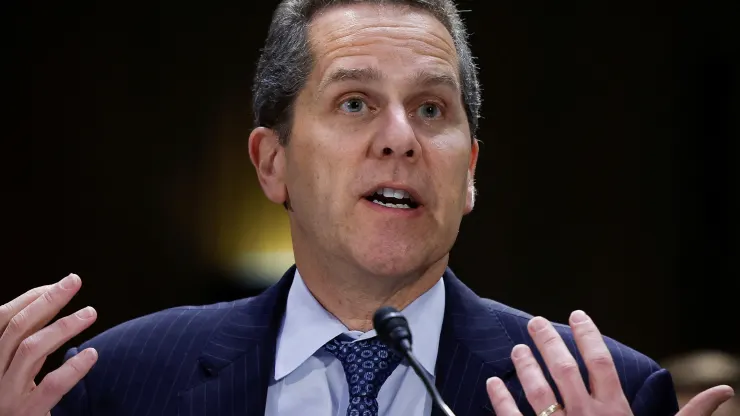The run on Silicon Valley Bank’s deposits this month went far deeper than was initially known.
Since the day regulators seized SVB, it was public knowledge that panicked customers withdrew $42 billion from the bank on March 9 on concerns that uninsured deposits were at risk.
But that pales in comparison to what would’ve gone out the next day, Michael Barr, vice chair for supervision at the Federal Reserve, testified Tuesday before the Senate Banking Committee. Regulators shuttered SVB on March 10 in the biggest bank failure since the 2008 financial crisis.
“That morning, the bank let us know that they expected the outflow to be vastly larger based on client requests,” Barr said. “A total of $100 billion was scheduled to go out the door that day.”
The combined withdrawal figure of $142 billion represents a staggering 81% of SVB’s $175 billion in deposits as of the end of last year. The dizzying pace at which money left SVB shows how quickly bank runs can happen when social media heightens panic and online banking allows for quick transactions.
Lawmakers summoned top U.S. banking regulators to Washington to explain why Silicon Valley Bank and Signature Bank collapsed earlier this month. Barr and others pointed to mismanagement by bank executives, and noted that banks with assets of more than $100 billion may need stricter rules. The former CEOs of the banks did not attend.
In fact, Fed supervisors began warning SVB management about the risk that higher interest rates posed to the bank’s balance sheet in November 2021, Barr testified. The bank “failed to address” Fed concerns in a timely way, exposing the company to its deposit run this month.
SVB’s final days
SVB’s final days as an independent bank were a roller coaster of emotions. After SVB management “spooked” investors and customers with its “belated” attempt to raise capital late Wednesday, March 8, the situation appeared to have calmed early Thursday, Barr testified.
“But later Thursday afternoon, deposit outflows started and by Thursday evening, we learned that more than $42 billion, as you indicated, had rushed out of the bank,” he said.
Fed staff worked around the clock on March 9 to save the bank, searching for enough collateral to borrow additional billions of dollars from the Fed’s discount window to honor withdrawal requests, Barr said.
The morning SVB was seized, regulators believed they may have solved the bank’s shortfall, only to run into a $100 billion wall of withdrawals.
“They were not able to actually meet their obligations to pay their depositors over the course of that day and they were shut down,” Barr said.

